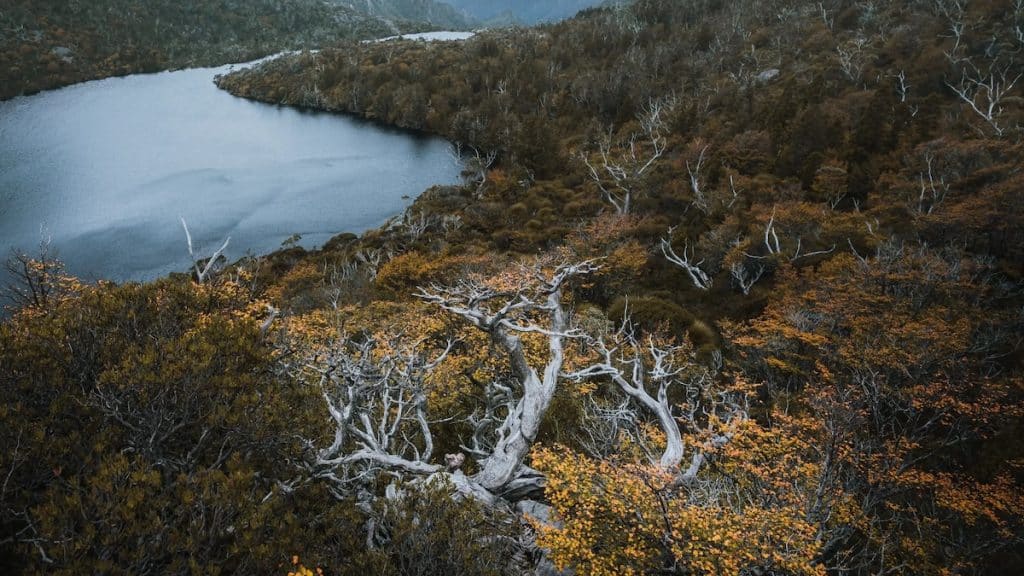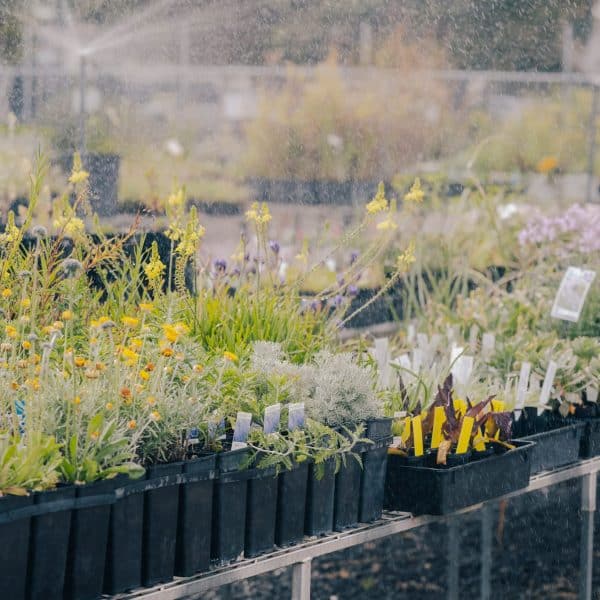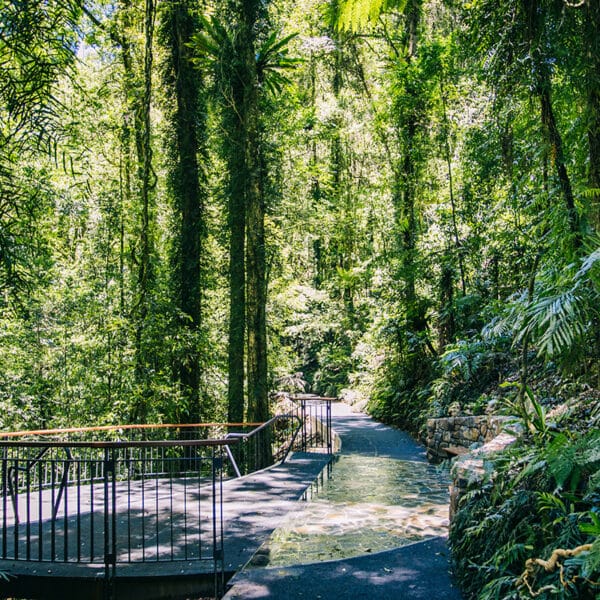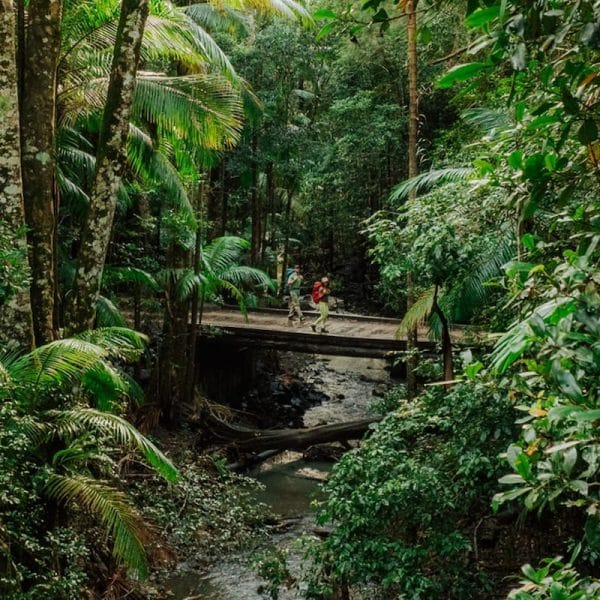Each autumn in Tasmania, a quiet but spectacular transformation begins in the highlands. Locals call it “the turning of the fagus” – a short seasonal window when Australia’s only cold-climate, native deciduous tree turns gold, orange and red before shedding its leaves.
From late April through May, bushwalkers and photographers make their way into the alpine regions of the island to witness the show. It’s become an annual pilgrimage of sorts – a chance to walk through entire hillsides lit up in colour.
The tree itself is known by a few names: fagus, Nothofagus gunnii, deciduous beech, and tanglefoot, for the way its low, twisted branches grow in thickets that can trip up walkers. It’s one of just a handful of native deciduous species in the country and remains relatively unknown compared to the more famous Huon pine – but this Gondwanan survivor is just as remarkable.
It grows only in Tasmania, and only above 800 metres in cool, wet places. For much of the year, it stays hidden among pencil pines and other ancient species – but in autumn, it announces itself.
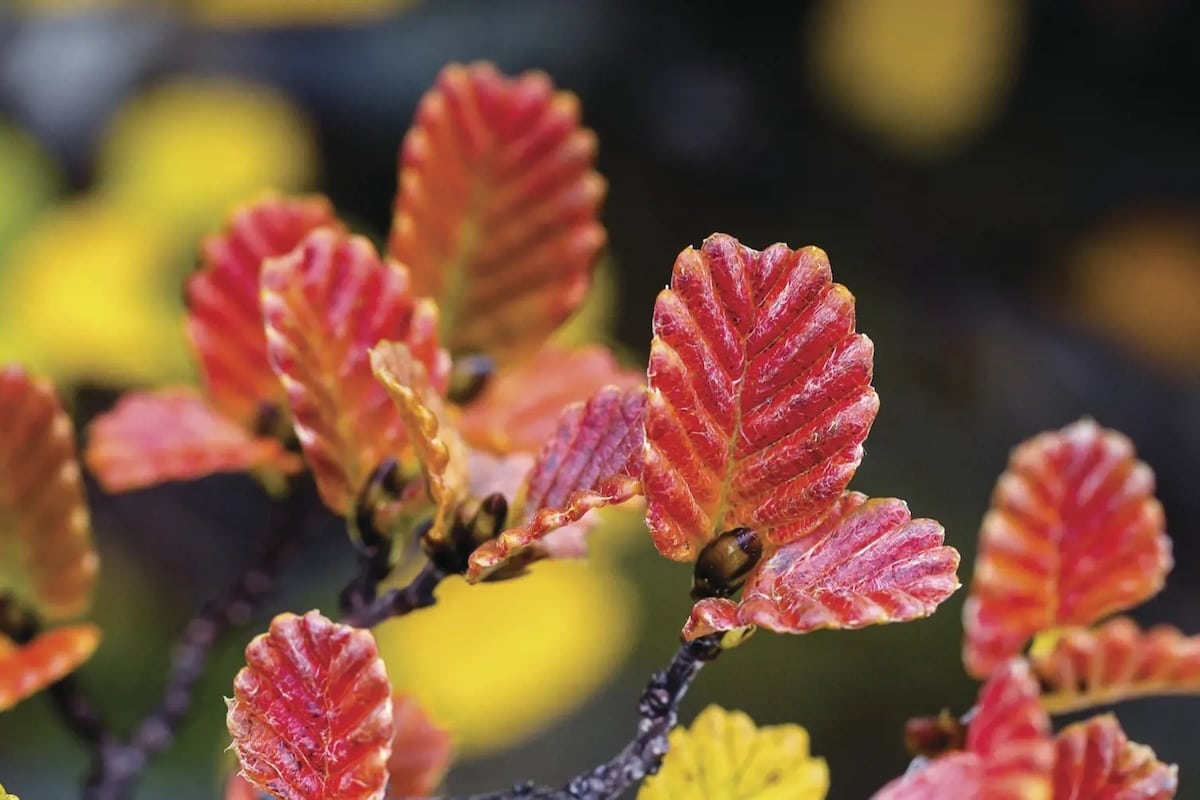
When it turns
The timing depends on the weather, though Anzac Day is generally seen as a good marker. Steve Leonard, senior ecologist with Natural Resources and Environment Tasmania, says the season is longer than people think, with leaves moving gradually through a spectrum of colours.
“They usually start to turn yellow around March, then progress to orange,” he says. “If it’s particularly frosty they may turn a deep red, before shifting to a rusty brown and finally falling off. It is not unusual to see one plant exhibit the full spectrum of colours at the one time.”

Where to see it
Mount Field National Park and the northern end of Cradle Mountain–Lake St Clair National Park are two of the most reliable locations for fagus walks.
At Cradle Mountain, the Dove Lake circuit (2–3hr, 6km) passes through stands of fagus. For something shorter, try the 750m Weindorfers Forest Walk. Crater Lake is another option – a longer walk that climbs up into slopes covered in autumn foliage.
At Mount Field, patches of fagus are visible from Lake Dobson Road, even before you start walking. For those looking for a longer experience, the Tarn Shelf walk offers a classic fagus route – a trail past glacial tarns and slopes scattered with colour. Closer to the road, Lake Fenton offers an observation deck and access to shorter walks through fagus country.

Looking closer
Fagus grows in places that are often cool and damp, so pack layers – and take your time. These walks are a chance to see some of Tasmania’s oldest ecosystems up close. Fagus commonly grows alongside pencil pines, another ancient Gondwanan species that hasn’t evolved for over 35 million years. Together they offer a glimpse into the island’s prehistoric past, when Tasmania sat around 20 degrees further south and received little sunlight for months at a time.
“You are looking back through deep time to an environment that is potentially similar to when dinosaurs were roaming Antarctica and Australia,” Leonard says.
The thick growth of fagus also provides habitat for birds and insects – including scrub wrens, thornbills and scrub tits – and rewards those who sit quietly in the landscape.
It’s also worth noting that fagus is not fire-tolerant. Unlike many Australian natives, it evolved in a humid environment and lacks the ability to regenerate after fire. As climate conditions change, this rare and localised species becomes increasingly vulnerable.
For seasonal updates and walks, keep an eye on Tasmania Parks and Wildlife Service’s website. The Festival of Fagus – held each year around Cradle Mountain – runs for two weeks during the turning season.
And while autumn is the headline act, Leonard says fagus is worth seeking out any time.
“In summer it has this vibrant green foliage that is really distinctive in the landscape – you can see it a mile off, as far as the next mountainside,” he says. “In winter, those tangled interlocking branches create really interesting forms, like sculpture. It really is beautiful year-round.”
Catch the turning of the fagus from late April to May.
Learn more: discovertasmania.com.au
